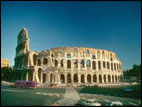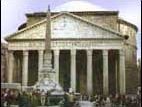Famous historical buildings of the world
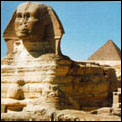
The megalithic passage tomb at Newgrange in Ireland covers over an acre and was constructed around 3200 B.C. Buried for centuries, the mound was rediscovered in 1699 and was restored starting in 1962. The tomb is extensively decorated with spiral and lozenge shapes. At the winter solstice, the rising sun shines down a long passage and lights up a cross-shaped chamber.
The Taj Mahal (1632–1650), at Agra, India, built by Shah Jahan as a tomb for his wife, is considered by some as the most perfect example of the Mogul style and by others as the most beautiful building in the world. Four slim white minarets flank the building, which is topped by a white dome; the entire structure is made of marble.
Another well-known Muslim edifice is the Citadel, located on an outcrop of limestone overlooking Cairo. Begun in 810, it was fortified (1176–1183) by Saladin during the Crusades.
Petra, in Jordan, is an ancient city whose buildings have been carved out of the surrounding hills. It was the capital of the Nabataeans in the 4th century B.C. The most famous of its buildings is Al Khazneh, a temple or treasury, with its impressive two-story facade jutting out from a pink rock.
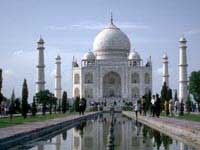 Other famed Muslim edifices are the Tombs of the Mamelukes (15th century) in Cairo, the Tomb of Humayun in Delhi, the Blue Mosque (1468) at Tabriz, and the Tamerlane Mausoleum at Samarkand.
Other famed Muslim edifices are the Tombs of the Mamelukes (15th century) in Cairo, the Tomb of Humayun in Delhi, the Blue Mosque (1468) at Tabriz, and the Tamerlane Mausoleum at Samarkand.
Angkor Wat, outside the city of Angkor Thom, Cambodia, is one of the most beautiful examples of Cambodian, or Khmer, architecture. The sanctuary was built during the 12th century.
The 8th-century Borobudur Temple on Java is a masterpiece of Indonesian Buddhist art and architecture. Its ascending terraces feature bas-relief sculptures and 72 Buddha statues.
The Great Wall of China (begun c. 214 B.C.), designed specifically as a defense against nomadic tribes, has large watchtowers that could be called buildings. It was erected by Emperor Ch'in Shih Huang Ti and is 1, 400 mi long. Built mainly of earth and stone, it varies in height between 18 and 30 ft.
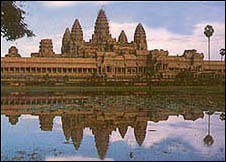 The Forbidden City (1407–1420) in Beijing served as the seat of imperial power during the Ming and Qing dynasties (1368–1911). It is the world's largest palace complex, covering about 183 acres and including 9, 999 buildings.
The Forbidden City (1407–1420) in Beijing served as the seat of imperial power during the Ming and Qing dynasties (1368–1911). It is the world's largest palace complex, covering about 183 acres and including 9, 999 buildings.
Typical of Chinese architecture are the pagodas, or temple towers. Among some of the better-known pagodas are the Great Pagoda of the Wild Geese at Sian (founded in 652) and Nan t'a (11th century) at Fang Shan.
Other well-known Chinese buildings are the Drum Tower (1273), the Three Great Halls in the Forbidden City (1627), Buddha's Perfume Tower (19th century), the Porcelain Pagoda, and the Summer Palace, all at Beijing.
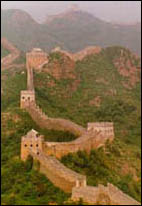 The painted wooden Torii, or Gateway, at Miyajima Island, Japan, stands in the tidal flats opposite the historic Itsukushima Shrine. Built in the traditional Shinto style, with two columns supporting a concave crosspiece on top, the gate serves to welcome the spirits of the dead as they come from across the Inland Sea.
The painted wooden Torii, or Gateway, at Miyajima Island, Japan, stands in the tidal flats opposite the historic Itsukushima Shrine. Built in the traditional Shinto style, with two columns supporting a concave crosspiece on top, the gate serves to welcome the spirits of the dead as they come from across the Inland Sea.
Other famous Japanese buildings include Himeji Castle (17th century) and the Buddhist temples of Horyuji (7th century) and Todaiji (8th century) at Nara, and Phoenix Hall (11th century) at Uji near Kyoto.
Machu Picchu is an ancient Inca fortress in the Andes Mountains of Peru. Thought to have been built and occupied from the mid-15th century, it is surrounded on three sides by stepped agricultural terraces, which are connected to the main plazas and buildings by thousands of stone steps.
Teotihuacán, located in central Mexico, was the largest city in the Americas at its height between A.D. 300 and 900. Built on a grid plan with a central avenue known as the Street of the Dead, it is the site of two enormous pyramid temples and the temple of the plumed serpent god Quetzalcoatl.
The city of Tikal in Guatemala, with its monumental temples and palaces, embodies the height of the Maya classic period (A.D. 300–900).
Easter Island is famous for its nearly 900 imposing monolithic stone figures called moais that dot the island. The statues are between 10 and 40 ft high and weigh an average of 14 tons. The island's Polynesian inhabitants are thought to have carved the figures between 400 and 1, 000 years ago, but how they accomplished this extraordinary task and what the statues meant to them remains a mystery.


